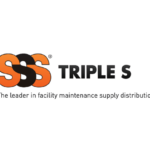Are you facing difficulties achieving adoption and ROI on your customer relationship management (CRM) system despite investing significant time and resources? If yes, you are not alone. Depending on the survey you use, up to 80% of business leaders are unsatisfied with the performance of their CRM.
We hear complaints such as:
- “Our team doesn’t want to use the CRM.”
- “We’re not seeing a return on our investment.”
- “Our CRM isn’t user-friendly.”
- “We’re not tracking the right data.”
Other concerns include low adoption rates, lack of focus, poor team buy-in, inadequate training, and sometimes, simply choosing the wrong software.
However, some of these concerns are typically the results of CRM failure, not the cause.
The actual problem lies in not considering what sales processes need improvement, and how aCRM can help.
The truth is that I speak to countless companies in various stages of their CRM implementation. When I ask them about their goals, they present a wish list of standard features and functionality, such as mobile capability or the ability to integrate with Outlook.
But this wish list rarely outlines the processes they want to improve using CRM.
How can you increase the odds that your CRM solution will match your business needs if you don’t consider what it is you want to improve?
Tip No. 1: Start with an Audit
Instead of focusing on features, I recommend starting with an audit examining inefficiencies in your sales process. This approach will help you drive your CRM project in the right direction. Ask yourself:
- What are the most inefficient processes in our business, and what do we want to address with a CRM system?
- What are the operational procedures we are currently missing and need to implement?
- Who is going to use CRM in our company?
- What other software would we like to connect to a CRM system?
- Will the CRM be able to grow with our business?
- Who will oversee the CRM project?
- How will I effectively train and support my team on using CRM?
Ensure that you include team and stakeholder input, current system capabilities, gaps and inefficiencies throughout each department, and areas of opportunity for both the short and long term. Front-loading details such as product and service taxonomy, account structures, opportunities, quotes, competitive analysis and contacts can fast-track your CRM to becoming the single source of truth for account management.
Linking these data points together is what will give you a 360-degree view of your business.
Contrary to popular belief, it doesn’t be complicated — if you follow this five-step approach:
- Sales Process Review: Take an honest view of your sales process from every angle of the sales cycle, including outside sales, inside sales, service, marketing and more.
- Sales Process Gap Analysis: Perform a gap analysis that takes your sales process review results and identifies the top three gaps by department and sales cycle stage.
- CRM Roadmap Matrix: Determine focus, value proposition, potential hurdles, action items and required changes to new or existing CRM.
- CRM Phased Roadmap: Here’s where you map a plan based on the results of that matrix. The Phased Roadmap should be built from a “start slow and grow” philosophy that prevents overwhelm and budget creep.
- CRM ROI Calculator: Want to communicate CRM’s value to your CEO or CFO? Gather your data and plug it into an ROI calculator that will generate a detailed report proving CRM to be a revenue generator and not an expense.
The result? A CRM based on your company’s true needs.
But CRM technology is just the conduit to drive sales growth.
Tip No. 2: Designate a CEO for CRM
You need someone in place who understands the business and can keep the technology on track. This person should be a dedicated leader to oversee CRM implementation — a CEO for CRM. This point person should act as a wingman, making sure the CRM is built to improve the sales process from the salesperson’s perspective.
However, I caution businesses not to take this responsibility lightly. The CEO for CRM should have the following qualities:
- Experience using a successful CRM system
- Belief in the value of a properly implemented CRM
- A good listener and team motivator
- A respected sales leader with the power to make changes
- Understands how sales, product specialists, marketing, service depts and management coexist
- Knows how to work as a team
- Good management, presentation and organization skills
- Bandwidth to spend the time needed for success
- IT savvy (but does not need to be an IT expert)
- Understands how CRM works with other information systems
It doesn’t end there. You need insight from the people who will use CRM in their day-to-day work.
Tip No. 3: Build an Internal Team of Super Users.
The supporting cast to your CEO for CRM is comprised of super users. These are your CRM evangelists — users from different roles and skill sets within the company who will actively use the CRM system in their workdays.
Super users may include sales managers, inside and outside salespeople, customer support representatives, data analysts and marketing managers. They play a critical role in relaying feedback and real-world guidance on how CRM can help them perform their jobs more effectively. They’re also the first line of defense against solutions that don’t meet their needs. If the CRM doesn’t make their jobs more productive and streamlined, why would your team want to use it?
Using these proven methodologies, you can avoid the common pitfalls of CRM and get back to growing your business.
Related Posts
-
The deal will integrate Proton.ai's CRM and eCommerce personalization technology into VAI's ERP offerings for…
-
Joe Choflet will now oversee product marketing for plastic and metal fittings and valves at…
-
Marty Lundberg joins the staff of the network of independent JanSan distributors.






